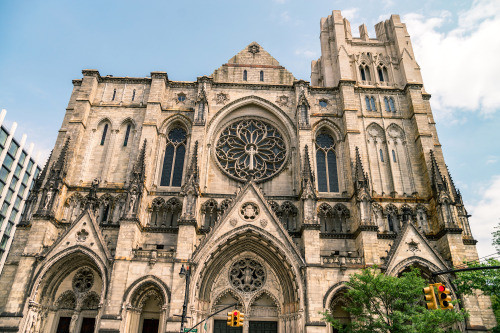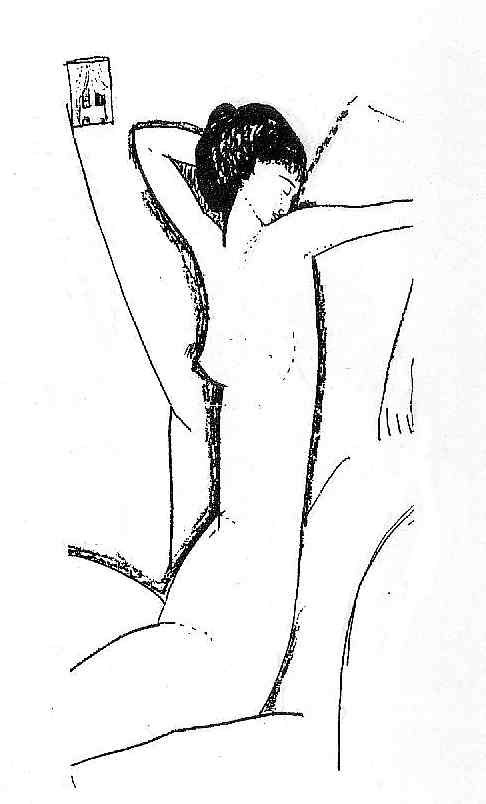Kait Kerrigan, one half of the acclaimed songwriting duo Kerrigan-Lowdermilk, offers a deep dive into the creation of one of their most poignant songs, “Not a Love Story.” For content creators and fans of insightful musical theatre, understanding the genesis of such a compelling piece provides valuable context and appreciation. This exploration reveals how a simple chorus, born from a feeling of platonic “breakup,” blossomed into a complex narrative about relationships, nostalgia, and the subtle shifts that define our personal histories, making it a unique entry in the realm of Love Story Songs.
The Accidental Birth of a Song: From Subway Thoughts to Studio Sound
Kerrigan elucidates that her songwriting partnership with Brian Lowdermilk often began from disparate creative starting points. With a background in libretto, her initial approach was deeply rooted in narrative and plot. However, a conscious decision to experiment with song forms outside of explicit storytelling led to the creation of several tracks for “The Bad Years,” including “Two Strangers,” “I Look Around for You,” and the intriguingly titled “Not a Love Story.” This shift in approach highlights a key aspect of songwriting: sometimes the most impactful love story songs (or songs that appear to not be love stories) emerge from unexpected creative detours.
The seed of “Not a Love Story” was surprisingly simple: a chorus written during a subway ride. Inspired by the bittersweet feeling of a best friend entering a romantic relationship – a sensation Kerrigan likened to a platonic breakup – the chorus lyrics, “It’s not a love story. It’s not a coming of age. It’s not the kind of thing you put into a play,” were almost a self-aware disclaimer. This initial impulse, deemed “too small, too personal, too trivial” for traditional plot-driven songwriting, underscores how deeply personal experiences, even those seemingly insignificant, can be the richest source material for resonant love story songs.
This initial chorus, seemingly a minor personal reflection, was sent to Brian Lowdermilk and returned as a sprawling, six-minute instrumental piece. Kerrigan describes the music as “mournful and yearning, virtuosic,” like a violin line imbued with deep emotion. This musical expansion took the simple lyrical idea and infused it with a dramatic weight, transforming the initial matter-of-fact statement into a question. The music itself suggested a hidden narrative, a contradiction within the lyrics – perhaps it was a love story, or at least something far more complex than initially stated. This creative back-and-forth, where music and lyrics challenge and expand upon each other, is a fascinating insight into how love story songs evolve.
Unearthing the Real Narrative: A Frat Party, a Cathedral, and a Turning Point
Faced with Brian’s expansive instrumental, Kerrigan began to delve deeper into the potential context for “Not a Love Story.” The song, initially conceived as a somewhat detached observation, was about to become deeply personal. The emotional core of the song crystallized around a specific memory: a night with her college boyfriend after a party at a co-ed fraternity. This anecdote reveals how seemingly ordinary moments can become imbued with profound meaning, serving as the catalyst for powerful love story songs.
 Exterior view of the Cathedral of St. John the Divine in New York City, showcasing its gothic architecture and ongoing construction with scaffolding.
Exterior view of the Cathedral of St. John the Divine in New York City, showcasing its gothic architecture and ongoing construction with scaffolding.
The “Hot Jazz” party at ADP, an event at a Harvard fraternity, held a particular significance. For Kerrigan, a Barnard student, it was a different social scene than her usual experiences, a chance to “dress up and dance together” with her boyfriend. However, the evening didn’t unfold as expected. A sense of disconnect permeated the night, a subtle disharmony that hinted at deeper issues within their three-year relationship. This party, intended to be a celebratory outing, became a stage for unspoken tensions, a common experience that resonates in many love story songs – the realization that things are not as perfect as they seem.
Looking back, Kerrigan identifies the underlying currents: the strain of distance, her boyfriend’s shyness in unfamiliar social settings, and her own frustration at feeling like her deep affection for him wasn’t understood or appreciated by others. The Harvard environment, once comfortable and familiar, now felt alienating. This “perfect storm” of factors culminated in an emotionally charged walk home along 114th Street, past the looming presence of St. John the Divine cathedral. The cathedral, under perpetual construction, became a potent symbol of their relationship – grand, imposing, yet perpetually incomplete, mirroring the unspoken fragility beneath the surface of their love story song in real life.
The night didn’t end in a dramatic breakup, but it marked a turning point. Kerrigan recalls feeling “cold and a little bitter,” an outsider observing her own experience as if filming a scene. The image of their small lives juxtaposed against the massive, unfinished cathedral became indelibly etched in her memory. This moment of quiet realization, of recognizing the shift in a relationship, is often more impactful than grand gestures, and it’s these nuanced emotions that give depth to the best love story songs.
Telescoping Time: Four Moments in a Single Song
“Not a Love Story” isn’t a linear narrative; it’s a telescoping of time, weaving together four distinct moments within a single song. The initial chorus, “it’s not a love story,” becomes the first layer, a present-day reflection on the second moment: the night by the cathedral. Then, propelled by the evocative nature of Lowdermilk’s music, the song delves further back, into “one dark second” – the nascent stages of their relationship in high school. This non-linear structure is a sophisticated approach to storytelling in love story songs, mirroring the way memory and emotion operate.
The high school romance is portrayed with a nostalgic glow. He was “the smartest kid,” and they were both somewhat rebellious, bending the rules to spend afternoons together in the back of the auditorium while she worked on her independent study of women writers and he studied AP Physics. This idyllic setting – a student-run theatre, stolen moments amidst academic pursuits – represents the idealized beginning of many love story songs, a time of innocent infatuation and shared passions.
 Black and white photo of Anna Akhmatova, a Russian modernist poet, in a contemplative pose, contrasted with a portrait of Amedeo Modigliani, an Italian painter and sculptor known for his modernist style.
Black and white photo of Anna Akhmatova, a Russian modernist poet, in a contemplative pose, contrasted with a portrait of Amedeo Modigliani, an Italian painter and sculptor known for his modernist style.
The song then fast-forwards to college, “moment no. 4,” capturing three years of shared life in cramped dorm rooms. Kerrigan humorously notes the discomfort of “extra-long twins” but emphasizes their youthful denial and insistence that they “liked the size of the bed.” This detail, seemingly trivial, speaks volumes about the compromises and romanticized perceptions often present in young love. The pre-cell phone era, with its reliance on landlines and PINE emails, further underscores the distance and the preciousness of their in-person moments. This nostalgic portrayal of long-distance college relationships adds another layer of relatable experience to the love story song.
The post-breakup conversation, focusing on the idea that they met at “the wrong time,” reveals a common coping mechanism and romanticization of lost love. This concept of “alternate timelines” highlights the enduring question of “what if” that often lingers after relationships end, a theme explored in countless love story songs. Kerrigan’s reflection on having only been truly in love three times, each time leading to personal transformation, adds a layer of mature introspection to the narrative.
Beyond the Conventional Love Story: Embracing the “Prehistory”
Drawing a parallel to the affair between Amedeo Modigliani and Anna Akhmatova, Kerrigan beautifully articulates the idea that their early relationship was a “prehistory” to their future selves. Akhmatova’s quote, describing their tryst as “the light, radiant hour before dawn,” resonates deeply with the themes of “Not a Love Story.” The song, in essence, captures this “prehistory,” the formative experiences that shape individuals before they fully become who they are meant to be. This makes “Not a Love Story” more than just a breakup song; it’s a meditation on personal evolution and the role relationships play in shaping our identities, distinguishing it from typical love story songs.
The return to the “reality of the night when things began to decay” is marked by the poignant lyric:
Cathedral bells rang out to mark the hour,
Reminding us that this was just another night,
That hours pass,
That morning breaks,
That somehow there’s still sunlight.
This verse encapsulates the quiet heartbreak of realizing a relationship is ending, not in grand dramatic fashion, but in the slow, almost imperceptible shift in everyday moments. The mundane reality of post-breakup egg sandwiches juxtaposed with the underlying sense of change highlights the nuanced and realistic portrayal of relationship decay that sets “Not a Love Story” apart from more idealized love story songs.
Ultimately, Kerrigan concludes that love stories are “never just love stories.” They are complex tapestries of friendship, growth, and sometimes, the painful realization that paths diverge. The distinction between love stories and friend stories, she notes, often lies in the clarity of “the breakup,” the definitive moment of closure. While she is no longer in contact with her college boyfriend, her enduring friendship with her best friend underscores the cyclical nature of relationships and the constant of change.
“Not a Love Story” transcends the typical confines of love story songs. It’s a nuanced exploration of memory, relationships, and personal growth, born from a simple chorus and expanded into a rich, multi-layered narrative. Kerrigan-Lowdermilk’s song reminds us that the most compelling stories are often found not in grand romantic gestures, but in the quiet, introspective moments that define our lives and relationships.

